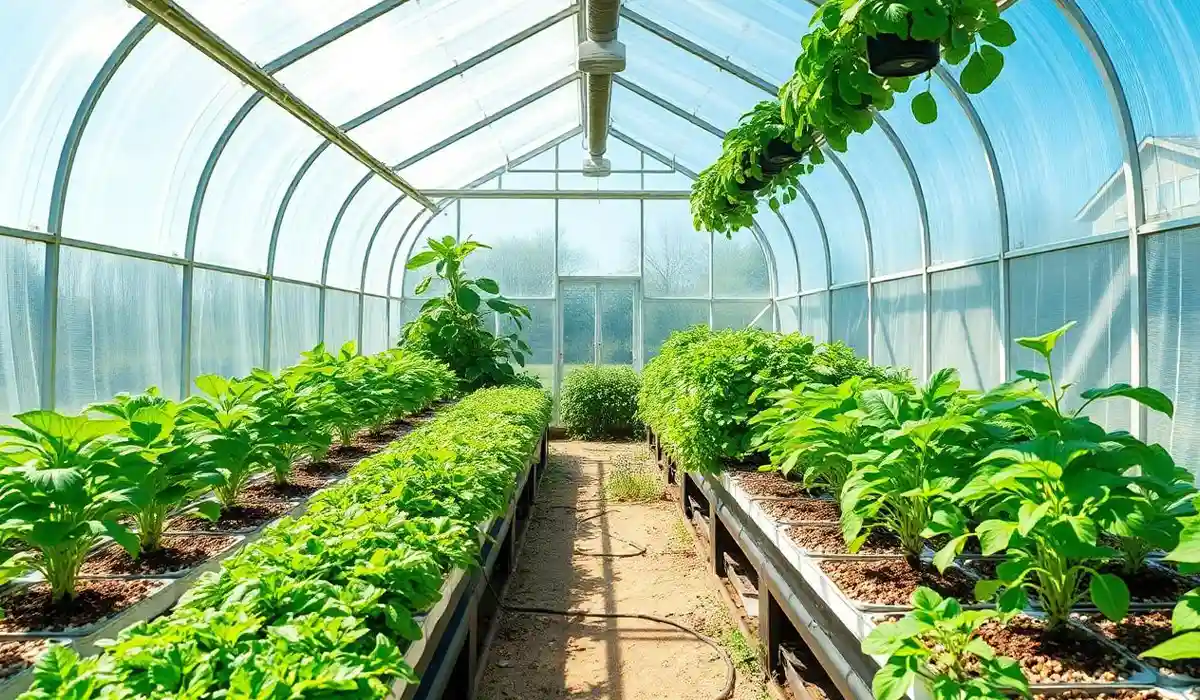Introduction
Gulf countries face unique challenges in agriculture. Severe aridity, scarcity of freshwater resources, saline soils, and limited arable land have made traditional farming methods increasingly difficult. In this context, hydroponics, the soil-less cultivation of plants using precisely controlled nutrient solutions, has emerged as a modern and sustainable solution for food production.
Hydroponics not only reduces water consumption by up to 90% but also allows the production of high-quality crops in a shorter period. These systems enable complete control over growth conditions, tolerate salinity, and can be implemented in urban and limited-space environments, making hydroponics a promising strategy for the future of agriculture in the Gulf region.
Section 1: Challenges of Traditional Agriculture in the Gulf
-
Water Scarcity
- Rainfall in Gulf countries is extremely low.
- Dependence on groundwater and desalinated seawater increases costs and pressures natural resources.
-
Saline and Unproductive Soils
- Many soils have high salinity, limiting the growth of conventional crops.
- Overuse of chemical fertilizers and inefficient irrigation exacerbate soil salinity.
-
Climate Stress and High Temperatures
- High temperatures and low humidity lead to rapid water evaporation and heat stress on plants.
- These conditions reduce crop yields and require innovative cultivation methods.
-
Limited Land and Urbanization
- Population growth and urban expansion have reduced available farmland.
- Farming systems that maximize production in small areas, such as vertical hydroponics and greenhouse cultivation, are increasingly necessary.
Section 2: Advantages of Hydroponics in the Gulf
-
Extremely Low Water Use
- Hydroponic systems recirculate nutrient solutions, reducing water use by up to 90% compared to traditional agriculture.
- Treated wastewater and recycled water can also be used.
-
Precise Nutrient Control and Crop Quality
- Hydroponics allows accurate control of nitrogen, phosphorus, potassium, and micronutrients.
- This leads to faster growth, higher yields, and better crop quality.
-
Salinity and Stress Tolerance
- Nutrient solutions and pH can be adjusted to grow crops in saline water or soil conditions.
- Hydroponics ensures year-round production even in high temperatures and desert environments.
-
High Productivity in Limited Space
- Vertical farming and compact greenhouse setups maximize land use efficiency.
- Urban hydroponic farms can supply fresh produce without requiring large tracts of farmland.
-
Reduced Pesticide and Herbicide Use
- Soil-borne diseases and many pests are eliminated in hydroponic systems.
- This results in healthier crops and lower chemical costs.
Section 3: Hydroponic Technologies and Modern Applications
-
Nutrient Film Technique (NFT)
- A thin film of nutrient solution flows over the roots, continuously providing essential nutrients.
- Ideal for leafy vegetables and fast-growing crops.
-
Deep Water Culture (DWC)
- Roots are submerged in oxygenated nutrient solution.
- Suitable for larger plants and industrial-scale greenhouses.
-
Vertical Farming
- Stacking plants vertically in greenhouses or urban buildings.
- Can increase productivity by up to 10 times compared to conventional agriculture.
-
Integration with Renewable Energy
- Solar panels and wind systems power hydroponic operations.
- Enables sustainable and off-grid crop production in remote desert areas.
Section 4: Successful Examples in the Gulf
-
United Arab Emirates
- Hydroponic projects in Dubai and Abu Dhabi use controlled greenhouses and treated water.
- Provide fresh vegetables to cities without putting pressure on groundwater.
-
Saudi Arabia
- Desert hydroponics produces vegetables and greenhouse fruits.
- Reduces dependence on imports and enhances food security.
-
Qatar and Bahrain
- Urban hydroponics produces fresh greens in limited space.
- Advanced systems monitor temperature, light, and nutrient levels for optimized growth.
Section 5: Future Outlook
-
Smart Agriculture
- IoT sensors monitor water quality, nutrient levels, and growth conditions in real-time.
-
Expanded Use of Recycled Water
- Municipal and industrial wastewater can be treated for hydroponic use.
-
Development of Stress-Tolerant Crops
- Research on plants resistant to salinity, high temperature, and contaminants ensures sustainable production.
-
Urban and Vertical Farming
- Reduces reliance on arable land and brings food production closer to urban populations.
-
Integration with Renewable Energy
- Solar and wind energy reduce operational costs and support energy self-sufficiency.
Conclusion
Hydroponics offers water efficiency, precise growth control, tolerance to harsh conditions, increased productivity, and urban farming opportunities, making it a critical solution for the future of agriculture in the Gulf.
Given water scarcity, soil salinity, high temperatures, and rising populations, hydroponics is not just an option but a necessity for food security and sustainable agriculture. Investing in hydroponic technology, combining it with recycled water and renewable energy, and developing stress-tolerant crops will ensure the long-term sustainability of agriculture in the region.






